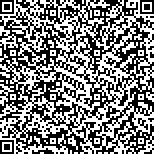| 引用本文: |
-
杨明柳,高霆炜,邢永泽,陆宇哲,农莹,刘文爱.廉州湾红树林大型底栖动物食物来源研究[J].广西科学,2017,24(5):490-497. [点击复制]
- YANG Mingliu,GAO Tingwei,XING Yongze,LU Yuzhe,NONG Ying,LIU Wen'ai.Study on the Food Sources of Mangrove Macrobenthos in Lianzhou Bay[J].Guangxi Sciences,2017,24(5):490-497. [点击复制]
|
|
| |
|
|
| 本文已被:浏览 693次 下载 817次 |

码上扫一扫! |
| 廉州湾红树林大型底栖动物食物来源研究 |
|
杨明柳1, 高霆炜1, 邢永泽1, 陆宇哲1,2, 农莹1,2, 刘文爱1
|
|
|
| (1.广西科学院广西红树林研究中心, 广西红树林保护与利用重点实验室, 广西北海 536000;2.广西大学动物科学技术学院, 广西南宁 530004) |
|
| 摘要: |
| [目的]了解可能性食物源对红树林大型底栖动物的贡献率。[方法]利用碳氮稳定同位素技术,对广西廉州湾红树林大型底栖动物及可能性食物源的碳、氮同位素比值(δ13C值、δ15N值)进行分析,并通过贝叶斯稳定同位素混合模型,估算不同食物源对大型底栖动物的贡献率。[结果]大型底栖动物的δ13C值为-23.37‰~-18.09‰,δ15N值为6.59‰~17.00‰,δ13C值、δ15N值的变化范围较大,表明大型底栖动物食物来源较为复杂多样。7种可能性食物源的δ13C值为-29.09‰~-21.53‰,δ15N值为6.85‰~15.67‰,其中红树植物的δ13C值最为贫化。大型底栖动物的营养级别均小于3,表明它们基本属于初级消费者。SIAR混合模型计算结果显示,颗粒有机物(POM)对大型底栖动物有较高的贡献率,其次为表层沉积物(SOM),大型藻类、附生植物的贡献率较低,红树植物叶片、落叶、树皮对大型底栖动物的贡献率最低。[结论]POM、SOM是广西廉州湾红树林大型底栖动物重要的食物源,红树植物不是大型底栖动物碳的主要来源。 |
| 关键词: 红树林 大型底栖动物 食物来源 稳定同位素 |
| DOI:10.13656/j.cnki.gxkx.20170920.001 |
| 投稿时间:2017-06-12修订日期:2017-09-13 |
| 基金项目:国家重点研发计划科技基础资源调查专项(2017FY100704),林业公益项目(201504413),广西科学院基本科研业务费资助项目(15YJ22HSL12)和广西红树林保护与利用重点实验室基金项目(GKLMC-201205)资助。 |
|
| Study on the Food Sources of Mangrove Macrobenthos in Lianzhou Bay |
|
YANG Mingliu1, GAO Tingwei1, XING Yongze1, LU Yuzhe1,2, NONG Ying1,2, LIU Wen'ai1
|
| (1.Guangxi Key Lab of Mangrove Conservation and Utilization, Guangxi Mangrove Research Center, Guangxi Academy of Sciences, Beihai, Guangxi, 536000, China;2.College of Animal Science and Technology, Guangxi University, Nanning, Guangxi, 530004, China) |
| Abstract: |
| [Objective] In order to understand the contribution rate of possible food sources to mangrove macrobenthos.[Methods] The carbon and nitrogen stable isotope analysis method was used to analyze the carbon and nitrogen isotopic ratios (δ13C values, δ15N values) of macrobenthos and possible food sources in the mangrove forest of Lianzhou Bay, Guangxi.The Bayesian stable isotope mixing model was used to estimate contribution of different food sources to macrobenthos.[Results] The results showed that the δ13C values of macrobenthos were -23.37‰ to -18.09‰, and the δ15N values were 6.59‰ to 17.00‰, the δ15N values varied widely, which indicated that the sources of macrobenthos were more complicated and diversity. The δ13C values of 7 possible food sources ranged from -29.09‰ to -21.53‰, and the δ15N values were 6.85‰ to 15.67‰, while the δ13C values of mangrove plants were more depleted among them.The trophic levels of macrobenthos were less than 3, which indicated that they were essentially primary consumers.The results of SIAR mixing model showed that the contribution rate of particulate organic matter (POM) to macrobenthos was higher, and followed by surface sediment (SOM), macroalgae and epiphytes.The contribution rate of mangrove leaves, fallen leaves and bark were the lowest for macrobenthos.[Conclusion] POM and SOM were important food sources for macrobenthos, and mangrove plants were not the primary source of carbon to macrobenthos. |
| Key words: mangrove macrobenthos food source stable isotope |
|
|
|
|
|